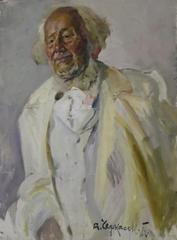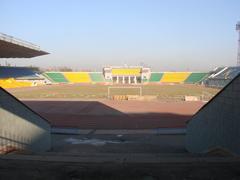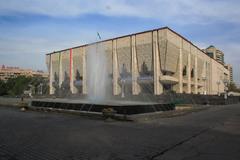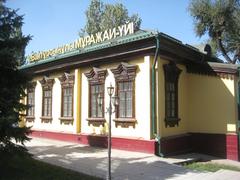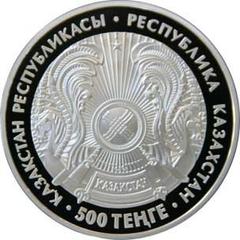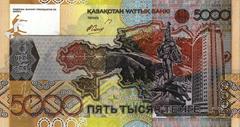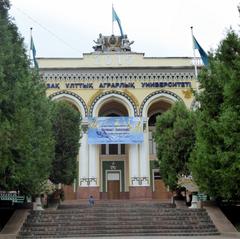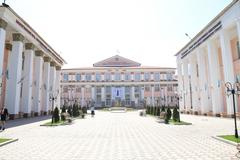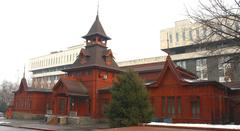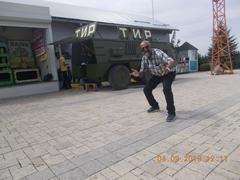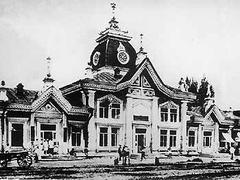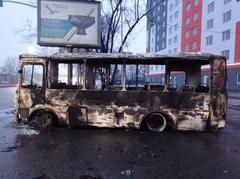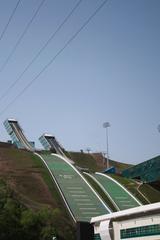Russian Theatre for Children and Teenagers (Almaty): Visiting Hours, Tickets, and Historical Significance
Date: 03/07/2025
Introduction
The Russian Theatre for Children and Teenagers in Almaty, Kazakhstan, is a cherished institution with deep roots in the city’s cultural landscape. Founded in 1945 under the visionary leadership of Natalia Sats—the pioneer of children’s theater worldwide—the theatre has dedicated itself to inspiring and educating young audiences through powerful performances and innovative artistic programs (silkadv.com; welcome.kz). Situated in the heart of Almaty’s vibrant cultural district, this theatre reflects the city’s multicultural heritage, offering Russian-language productions while embracing Kazakh cultural narratives, thus fostering social cohesion and artistic exchange (en.wikipedia.org).
This guide provides detailed information about the theatre’s history, architectural features, visiting hours, ticketing, accessibility, and nearby attractions. Whether you are a family, educator, or tourist, you’ll find practical tips and cultural insights to ensure a memorable visit.
Historical Overview and Cultural Importance
Foundation and Early Years
The Russian Theatre for Children and Teenagers was established in the context of post-war Soviet Kazakhstan, at a time when the arts were seen as central to education and civic life (e-history.kz). Natalia Sats, exiled to Almaty during World War II, spearheaded the creation of the theatre, drawing on her experience founding the world’s first children’s theatre in Moscow. The inaugural season in 1945 featured classics like Evgeny Schwartz’s “Little Red Riding Hood,” setting a precedent for educational and entertaining productions.
Development During the Soviet Era
Throughout the Soviet period, the theatre became a cornerstone of Almaty’s rich theatrical ecosystem, focusing on youth-oriented productions. The repertoire included classic Russian tales, international works, and contemporary pieces addressing social and moral themes appropriate for children and teenagers. The institution’s mission extended beyond performances, with outreach in schools and community centers, further embedding it in Almaty’s cultural fabric (e-history.kz).
Transition and Modernization
Following Kazakhstan’s independence in 1991, the theatre evolved to reflect the country’s new multicultural identity. Russian-language productions remained central, but works by Kazakh authors and stories celebrating Kazakhstan’s diversity were increasingly featured (new-east-archive.org). In 2000, the theatre relocated to a modernized facility, broadening its programming and capacity.
Artistic Innovation and Social Impact
From its inception, the theatre attracted leading Soviet and Kazakh artists, fostering cross-cultural dialogue and artistic experimentation (silkadv.com). Bilingual and multicultural performances helped preserve Kazakh performing arts, while initiatives like the free “Sats ComUnity” studio nurture future talent (welcome.kz). The theatre’s educational mission remains strong, with workshops and outreach programs promoting creativity and critical thinking.
Architectural and Artistic Features
Exterior and Interior Design
The theatre’s building is a notable example of Soviet-era public architecture—functional, accessible, and subtly monumental (EAA Architectural Styles). Its geometric façade, large vertical windows, and occasional stained glass elements create a welcoming atmosphere. Inside, the spacious lobby and main auditorium are designed for comfort and excellent acoustics, while Soviet-era murals and stained glass celebrate Russian and Kazakh folklore (welcome.kz).
Public Art and Gardens
Landscaped gardens and outdoor sculptures, including a recent bronze statue honoring actor Yuri Pomerantsev, contribute to the theatre’s cultural significance and aesthetic appeal (welcome.kz).
Visitor Information
Visiting Hours
- Tuesday to Sunday: 10:00 AM – 7:00 PM
- Monday: Closed
Hours may vary during holidays and special events. Always check the official website for the current schedule.
Ticketing
- Standard Prices: 500–1500 KZT (varies by performance and seat)
- Discounts: Available for children, students, seniors, and groups
- Purchase: At the box office, via the official theatre website, or through authorized vendors
Accessibility
- Wheelchair Access: Ramps, elevators, and accessible restrooms are provided
- Seating: Designated areas for people with disabilities
- Staff Assistance: Multilingual and trained to support visitors with special needs
Guided Tours and Special Events
- Guided Tours: Available on weekends and by appointment; explore the building’s history and backstage areas
- Special Events: Seasonal festivals, workshops, and community days are regularly featured; details on the theatre’s website and social media
Amenities
- Cloakrooms: Conveniently located in the lobby
- Restrooms: Accessible and family-friendly
- Café: Refreshments available before and after performances
- Souvenirs: Programs and memorabilia sold in the lobby
Visitor Experience and Tips
- Arrival: Arrive 20–30 minutes early for ticket collection and to explore the lobby’s murals and exhibits
- Dress Code: Casual attire is suitable; families often dress up for special occasions
- Photography: Allowed in public areas; prohibited during performances unless otherwise indicated
- For Families: Booster seats, interactive workshops, and a child-friendly staff ensure a welcoming environment
Nearby Attractions
- Abai Opera and Ballet Theatre
- Central State Museum
- Ascension Cathedral (Panfilov Park)
- Green Bazaar
These cultural sites are within walking distance, allowing visitors to craft a full day’s itinerary in Almaty’s historic center (cybo.com).
Frequently Asked Questions (FAQ)
Q: What are the theatre’s visiting hours?
A: Tuesday to Sunday, 10:00 AM – 7:00 PM; closed on Mondays. Check the official website for updates.
Q: How do I buy tickets?
A: Tickets are available at the box office, online, and through authorized vendors. Advance booking is recommended.
Q: Is the theatre accessible for wheelchair users?
A: Yes, with ramps, elevators, and accessible restrooms provided.
Q: Are performances suitable for non-Russian speakers?
A: Most shows are in Russian, but the expressive performances and occasional bilingual productions make them accessible to a wider audience. Printed summaries in English may be available.
Q: Are guided tours available?
A: Yes, by appointment or during special open days.
Conclusion and Call to Action
The Russian Theatre for Children and Teenagers in Almaty stands as a beacon of artistic excellence and cultural heritage, offering imaginative performances, educational programs, and a welcoming environment for audiences of all ages. Its rich history—rooted in the vision of Natalia Sats—continues to shape Kazakhstan’s theatrical landscape. Whether you’re a local resident or a visitor, the theatre promises an enriching experience that bridges generations and cultures.
For current schedules, ticketing, and updates, visit the official theatre website. Download the Audiala app for exclusive content and stay connected with Almaty’s dynamic cultural scene. Make your visit to the Russian Theatre for Children and Teenagers a highlight of your time in Kazakhstan.
